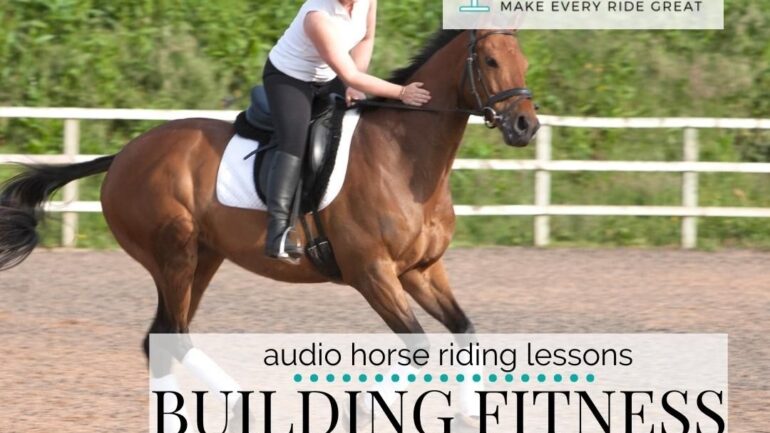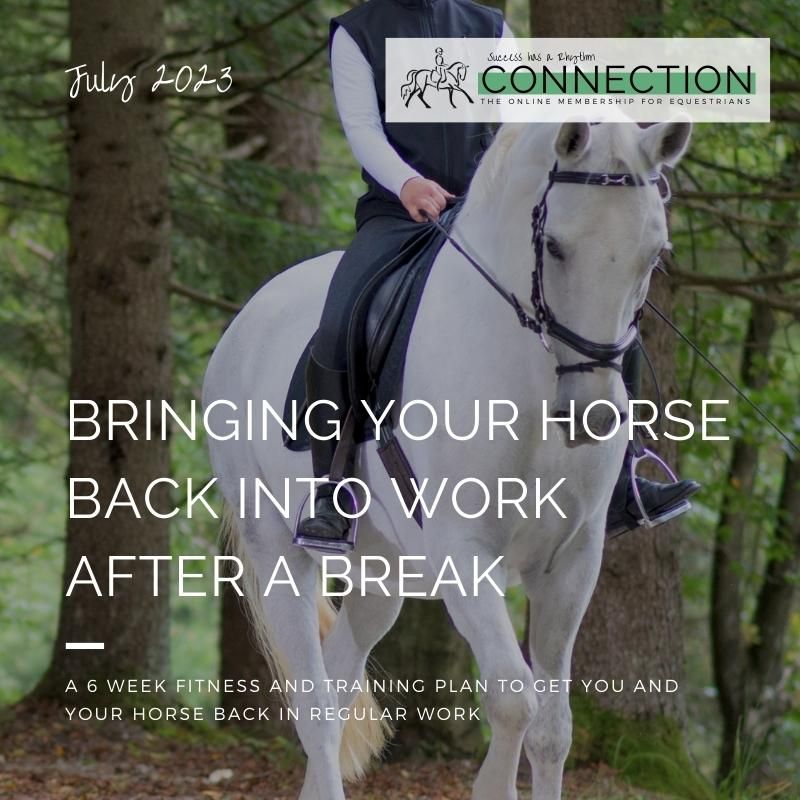Whether your horse has been on a hiatus due to injury, winter hibernation, or life’s seasons, bringing them back into work can feel so exciting. And yet, it can also feel a little overwhelming for many riders. In this episode of the Daily Strides Podcast, we’ll explore how you can successfully build your horse’s fitness and bring them back to work after a long break.
1. Slow & Steady Wins the Race
Now, there is always a temptation to simply ‘dive in’ and start riding. Full speed ahead! But… As you know, this is not in your horse’s best interest, especially long term when we are talking about soundness, training, and longevity.
Patience is one of your best friends here and while thinking about what you used to do with your horse when he was fit before can be inspiring, it is vital that you give him the time and the opportunity to get to that point again in his work and training.
Start slow with lots of road work and walking initially. This steady work will help to increase his stamina to prevent injuries. An initial 6-week ‘build up’ period can be useful to create and follow.
2. Incorporate Groundwork into Your Plan
Groundwork is a fantastic tool to build your horse’s fitness, especially if he’s coming back to work after a long break for a few reasons. Firstly, it helps to strengthen the bond between both of you and establish the partnership again. This is important to build confidence in yourself and each other again.
The second reason is that you can begin to ‘fine-tune’ your aids. It’s a little like setting up the expectation for your horse, to help him better understand what is expected and allowed when working together. After a longer break, your horse might not be as responsive as he once was to your aids. Groundwork can be a great way of helping to reestablish the ‘rules’ for both of you.
And then of course, there is the third reason groundwork is great when coming back into work; it helps to increase suppleness, flexibility, balance, and overall strength. As with everything else, slow and steady initially.
3. The First 3 Weeks
Start with short and focused sessions of 20 minutes with your horse. This is great news for riders as you can be more consistent with your riding work if the sessions are short and sweet. Many riders fail to realize the time commitment involved with bringing a horse back to work. And this can lead to a more hit-and-miss approach to their training sessions!
Begin your riding sessions with short, easy hacks on roads or lanes if possible. Hard and flat surfaces are best for the initial rides, hence the idea of road work being helpful for the first 2 to 3 weeks. Spend most of the time in the walk at the beginning. 20 minutes and then building up to 30, and 45 minutes of active walking. From there, you can begin to add some trotting into your work. Short and steady work sprinkled in through the walking.
Focus on building their confidence and trust in you as their rider. You can also begin introducing some gentle supplying work here as well to keep the rides interesting for both of you.
There is a full 6-week plan for doing this ready and waiting for you inside of Connection. The plan is complete with 5 simple suppling exercises that you can ride with your horse when on the roads. To get access, simply join today and search for June 2023 :)
4. The Second 3 Weeks
It’s important to continuously tweak your plan to your horse’s particular needs. Your horse will give you feedback; allow this to guide your actions. If they seem uncomfortable or stressed, take a step back and reassess your approach.
Be attuned to their needs and preferences. This applies both physically, mentally, and emotionally.
The second 3 weeks are when you can begin to add some variety to your training. Incorporate some different methods into your training program such as hill work, pole exercises, and transitions to keep your horse engaged and prevent boredom. This will also help him to begin developing true strength, as well as stamina.
5. Be Responsible
Every horse is different. How long it takes your horse to safely come back to work will depend on you and your horse’s unique circumstances.
Building your horse’s fitness requires you to pay attention and make adjustments as you go.
Remember to celebrate your horse’s progress, no matter how small. Each step toward full recovery and fitness is a milestone worth acknowledging. Positive reinforcement creates a happy and confident horse and a strong partnership going forward.
Happy Riding
Lorna
Related Topics & Resources:-
- Groundwork for Horses and Rhythm in Training
- Groundwork for Riding – Successfully Take the Conversation from the Ground into the Saddle
- The Returning to Riding Program



